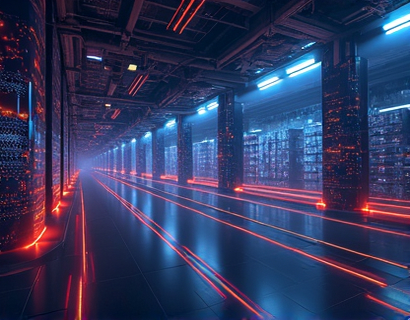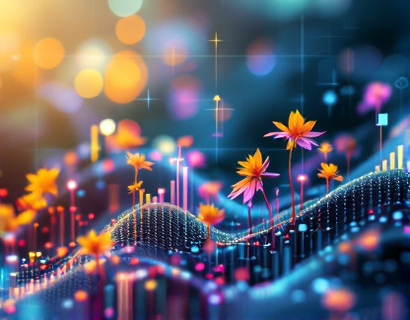Elevate Your Aquaculture Business with Advanced Software Solutions
In the rapidly evolving world of aquaculture, business owners and managers face numerous challenges that can impact the success and sustainability of their operations. From managing complex logistics and ensuring optimal water quality to tracking production metrics and maintaining compliance with regulations, the tasks at hand are both diverse and demanding. Advanced software solutions are revolutionizing the way aquaculture businesses operate, offering powerful tools that streamline processes, enhance productivity, and optimize resource management. This article delves into the critical role of aquaculture software solutions, exploring how they can transform your business and help you thrive in a competitive market.
Streamlining Operations with Integrated Software
One of the primary benefits of adopting advanced software solutions in aquaculture is the ability to streamline operations. Integrated software platforms provide a centralized system where various aspects of the business can be managed efficiently. This includes everything from feed management and inventory control to labor scheduling and financial tracking. By consolidating these functions into a single, user-friendly interface, business owners and managers can reduce the time spent on manual tasks and minimize the risk of errors.
For instance, an integrated system can automatically update inventory levels as feed is dispensed, ensuring that stock levels are always accurate and up-to-date. This not only saves time but also helps prevent overstocking or stockouts, which can have significant financial implications. Additionally, automated reporting features allow for real-time monitoring of key performance indicators, enabling quick decision-making and proactive problem-solving.
Boosting Productivity through Automation
Automation is a cornerstone of modern aquaculture software solutions, and its impact on productivity cannot be overstated. Automated systems can handle routine tasks with precision and consistency, freeing up staff to focus on more strategic activities. For example, automated feeding systems can be programmed to dispense the correct amount of feed at optimal times, based on factors such as water temperature, fish size, and growth rates. This ensures that fish receive the right nutrition at the right time, promoting healthy growth and maximizing yield.
Moreover, automation extends to monitoring and controlling environmental parameters. Advanced sensors and control systems can continuously monitor water quality parameters such as pH, dissolved oxygen, and ammonia levels. If any parameter falls outside the desired range, the system can automatically adjust conditions to maintain optimal levels. This not only improves the health and well-being of the aquatic organisms but also reduces the risk of disease outbreaks and mortality, leading to higher production efficiency.
Optimizing Resource Management
Effective resource management is crucial for the sustainability and profitability of aquaculture operations. Software solutions provide powerful tools to optimize the use of resources, including water, energy, and feed. By leveraging data analytics and machine learning algorithms, these systems can identify patterns and trends, offering insights that help reduce waste and improve efficiency.
For example, water usage can be optimized through precise control of water circulation and filtration systems. Software can analyze historical data and current conditions to determine the most efficient settings for pumps and filters, minimizing water wastage and energy consumption. Similarly, feed management systems can calculate the exact amount of feed required based on real-time data, reducing overfeeding and minimizing nutrient runoff into the environment. This not only saves costs but also contributes to environmental sustainability.
Enhancing Decision-Making with Data Analytics
Data-driven decision-making is a key advantage of using advanced software solutions in aquaculture. These systems collect and analyze vast amounts of data, providing valuable insights that can inform strategic decisions. From predicting market trends to optimizing production schedules, data analytics can help business owners and managers make informed choices that drive growth and profitability.
For instance, by analyzing historical production data, software can identify the most profitable species to farm, the optimal stocking densities, and the best times to harvest. This data can also be used to forecast future demand and adjust production accordingly, ensuring that the business remains competitive and responsive to market needs. Additionally, real-time monitoring of financial metrics allows for timely adjustments to pricing, cost management, and investment strategies.
Ensuring Compliance and Regulatory Adherence
Compliance with environmental and regulatory standards is a critical aspect of running a successful aquaculture business. Advanced software solutions can help ensure that all operations are in line with local, national, and international regulations. These systems can track and manage documentation, generate required reports, and alert staff to upcoming compliance deadlines.
For example, software can maintain a digital record of all environmental monitoring data, feed usage, and waste management practices. This not only simplifies the process of generating compliance reports but also provides a transparent and auditable trail. In the event of an inspection, having all necessary documentation readily available can save time and reduce stress, ensuring a smooth and compliant operation.
Improving Worker Safety and Well-Being
The safety and well-being of workers are paramount in any industry, and aquaculture is no exception. Advanced software solutions can contribute to a safer working environment by streamlining safety protocols and monitoring conditions that may pose risks to employees. For instance, systems can track the maintenance schedules of equipment, ensuring that all machinery is in good working order and reducing the likelihood of accidents. Additionally, software can monitor environmental conditions such as oxygen levels and temperature, alerting staff to potential hazards and enabling prompt action to be taken.
Moreover, by reducing the need for manual data entry and paper-based processes, software can minimize the risk of errors and accidents caused by human factors. This not only enhances safety but also improves overall workplace efficiency and morale.
Scalability and Flexibility for Growing Businesses
As aquaculture businesses grow and evolve, their software needs must adapt accordingly. Advanced solutions are designed to be scalable and flexible, accommodating the changing requirements of expanding operations. Whether a business is just starting out or looking to expand into new markets, the software can grow with the business, providing the necessary tools and support at each stage of development.
For example, a small-scale operation can begin with a basic package that covers essential functions such as feed management and inventory control. As the business expands, additional modules can be added to handle more complex tasks like advanced analytics, financial management, and regulatory compliance. This modular approach ensures that the software remains relevant and valuable, providing a solid foundation for long-term success.
Integration with Other Systems and Technologies
Modern aquaculture software solutions are designed to integrate seamlessly with other systems and technologies, creating a cohesive and efficient operational ecosystem. This includes integration with IoT devices, GIS mapping tools, and even blockchain for traceability. By connecting various systems, businesses can achieve a holistic view of their operations, from production to distribution.
For instance, integrating IoT sensors with the software allows for real-time monitoring of water quality, fish health, and environmental conditions. This data can be visualized on a dashboard, providing a comprehensive overview of the operation. Similarly, integrating with GIS mapping tools can help optimize site selection and management, ensuring that facilities are located in areas with the best resources and minimal environmental impact. Blockchain integration can enhance traceability, allowing consumers to verify the origin and quality of the products they purchase.
User-Friendly Interfaces and Training Support
Despite the complexity of the features and functionalities offered by advanced software solutions, user-friendliness remains a top priority. Intuitive interfaces and user-friendly designs ensure that staff can quickly learn and effectively use the software, minimizing the learning curve and maximizing adoption. Additionally, comprehensive training support is often provided, including online tutorials, webinars, and on-site training sessions.
This support helps ensure that all users, from technical staff to management, can fully leverage the software's capabilities. Well-trained employees are more efficient and confident in their roles, leading to improved overall performance and a more positive workplace culture.
Conclusion
In conclusion, advanced software solutions are transforming the aquaculture industry by providing powerful tools that streamline operations, boost productivity, and optimize resource management. By adopting these technologies, business owners and managers can gain a competitive edge, ensuring their operations are efficient, sustainable, and profitable. As the industry continues to evolve, the importance of leveraging advanced software solutions will only grow, making it an essential investment for any serious aquaculture business.










































